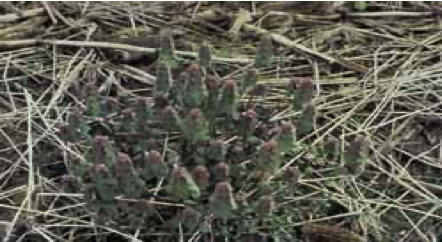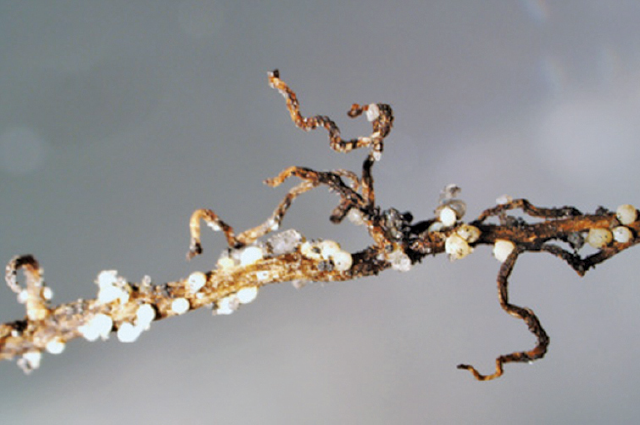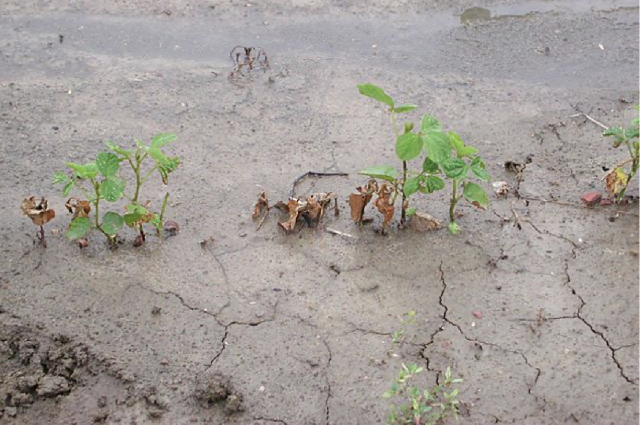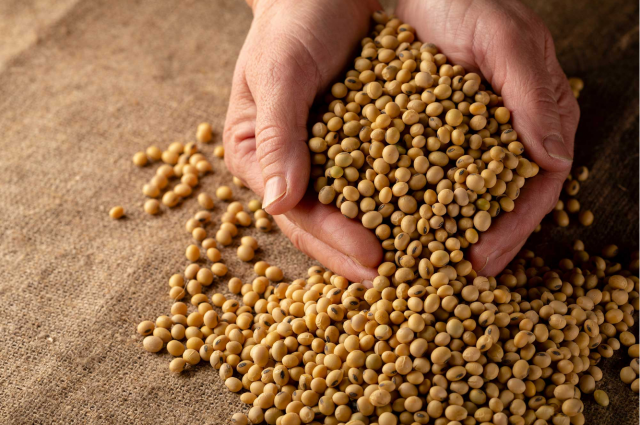Winter annual weeds affect Soybean Cyst Nematode
Winter annual weeds have been getting a little more attention in recent years. Many producers simply ignore them, because they are not an issue during the growing season. In addition to weed competition issues, winter weeds may be adding to other pest problems. Soybean Cyst Nematode (SCN) is the most economically important pest of soybeans in much of the United States. Yield losses of up to 30% have been documented when no visible symptoms are evident1. Anything we can do to limit damage from SCN is advisable. Management practices for reducing damage from SCN include; planting SCN-resistant varieties and rotating to non-host crops such as corn or wheat. There are winter annual weeds however, that can act as hosts for SCN. That allows for growth and development of SCN in the absence of soybeans and reduces the effectiveness of rotating to non- host crops.
Two very common winter annual weeds, Purple deadnettle & Henbit are both strong hosts for SCN1. At least four other weeds are moderate to weak hosts for SCN. They are: Field pennycress, Shepherd’s purse, Small-flowered bittercress, and Common chickweed. Ohio State University has provided similar information2.
Control of winter annual weeds can provide several benefits. These include:
- Faster warm up of soils in the spring
- Conservation of moisture & soil nutrients
- Less residue, easier planting
- Reduced SCN population development
Winter weed management options that will provide the most benefit for reducing SCN populations as well as providing weed control should include:
- Fall herbicide applications in fields known to have winter annuals, usually in October. Make applications early, in many cases within a week after harvest. Best control will occur while soil temperatures are warm, and because SCN develops above 500F. Most of the Midwest Universities recommend 2,4-D as a starting point for fall herbicide packages.
- Residual herbicides applied to both corn and soybeans during the growing season will delay the emergence of winter annuals in the fall. If fall herbicide applications can’t be made, spring control of winter annuals should not be delayed in order to prevent the development of SCN 0 populations after soils warm above 50 F.

1. Winter Annual Weeds and Soybean Cyst Nematode Management, WS-36, Purdue
2. Weed Hosts of Soybean Cyst Nematode in Ohio, AGF-145- 00, OSU
This information may have been accumulated from publicly available sources outside of Dyna-Gro Seed, or its affiliates. Individual results may vary, and performance may vary from location to location and from year to year. This result may not be an indicator of results you may obtain as local growing, soil and weather conditions may vary. Dyna-Gro® is a registered trademark of Loveland Products, Inc. Featured logos are service/trademarks of their respective owners.




